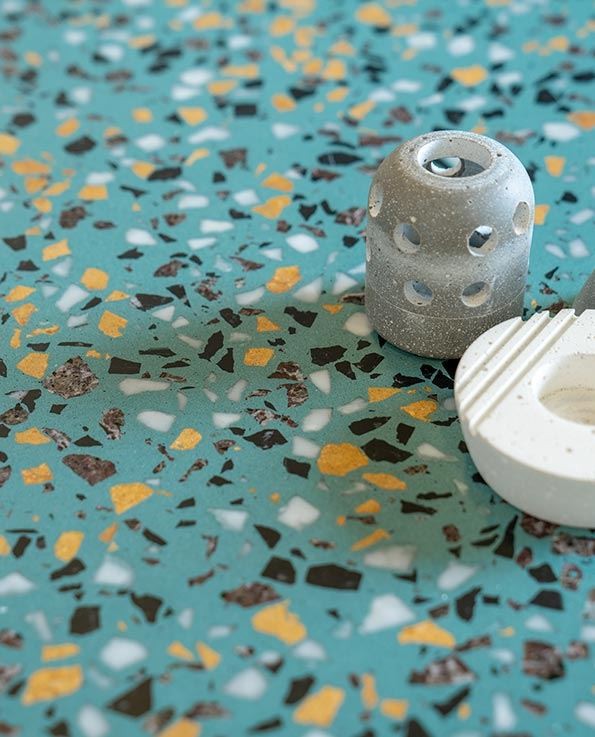
There are so many things you can do with paint, most of which change the appearance of worn-down surfaces.
Planning a paint job this year? Consider transforming existing ceramic floor tiles into a fresher, more trendy aspect of your space’s interior design.
Yes, you read that right – you can paint over ceramic tiles.
With the right product and knowledge of proper application techniques, you should be able to give your old tiles a new decorative paint finish. Read on to learn how you can transform surfaces and successfully paint over ceramic floor tiles.
Which tiles can be painted?
Ceramic tiles can indeed be painted, but there are certain conditions wherein the coating does not hold up long, no matter how perfectly it was applied. For instance, exposure to moisture for extended periods causes the paint to peel away faster than dryer conditions.
To make sure the effort, time, and money you spent on the project doesn’t go to waste, only paint ceramic tiles located in dry parts of the house.
If painting tiled floors in high-moisture places like the bathroom or kitchen cannot be avoided, do so in sections that are as far away from the splash zone as possible. You can also look for paint made specifically for bathrooms.
What paint products should I use?
Although proper preparation allows you to use almost any kind of paint for ceramic tiles, painting contractors have these two most recommended options you can choose from:
Latex Paint
When using latex, apply one to two coats of binding primer first. Choose a product that adheres to tiles.
Let it dry as instructed before applying two topcoats of acrylic latex paint.
Epoxy Paint
Epoxy paint is made for tiles and other hard-to-paint surfaces, though it comes in limited color choices.
Apply two coats of two-part epoxy paint and follow directions for use carefully. Let it dry for as long as recommended.
How Do I Paint Ceramic Tiles?
If you want to achieve a perfect paint finish for any surface, you’ll need to create a smooth canvas first. And to do that, you must ensure that the tiles are clean, smooth, and undamaged.
Below are the five steps you need to take to paint ceramic floor tiles:
Step #1: Clean the tiles.
Using a mixture of half-cup trisodium phosphate (TSP) cleaner diluted in a gallon of water, get rid of any dirt, grime, grease, soot, and oils from the tiles’ surface. You can also use a commercial cleaner made to remove mold.
Then, using a brush and several dry rags, scrub out any visible dirt and stains on the floor. You can also use a mop, but make sure you rinse it frequently and re-saturate the mop head with the cleaning solution.
Switch between wet mopping and scrubbing before rinsing and wiping away excess moisture. Repeat the process until the surface to be painted – both tile and grout – are thoroughly cleaned. Let dry in a well-ventilated environment.
Pro Tip: Wear protective gear such as gloves and waterproof boots when cleaning the tiles.
Repair, if needed.
See any chips or cracks on the tiles? Repair them first before moving to the next step. Use two-part epoxy or caulk to fill in any damages.
Step #2: Sand over the tiles.
Using an orbital palm sander with fine-grit sandpaper attachment, sand over the tile to remove any extra finishes on it. Do this more thoroughly, especially for extra-glossy tiles.
Once you are done, clean the dust from the surface using a damp cloth.
Step #3: Prime the tiles.
Before painting, prepare the tiled floor using a water-based primer to ensure better coverage and longevity of your painted tile floor.
Choose products that have high adhesion and are ideal for the paint you’re planning to use. High-adhesion primers chemically bond with the tile and create a paintable surface. This will prevent the paint from peeling and flaking.
If you want, opt for white- or grey-tinted primers for a neutral base. This will also lessen the number of coats needed to achieve full coverage.
Step #4: Paint the tiles.
Now, it’s time for the easiest part: painting the tiles.
Apply at least two to three coats or more to get full coverage. Make the strokes as even as possible.
You can also pick just about any color for your tiles, depending on their availability in the type of paint you choose.
Most paint suppliers and DIY stores can mix up the paint for you so you can get the shade you’re after. But if you’re covering dark-hued tiles using a lighter color, you may need to apply additional coats to achieve the best possible color.
Stencil for a gorgeous look.
Stenciling is a technique that lets you glam up your floor tiles using paint.
The painting process is the same. Apply several coats of paint until fully covered and seal everything into a solid painted surface. Then, apply the stenciled design over it.
Though it may take longer than usual, the result is definitely worth it.
Step #5: Let it dry.
Always read the manufacturer’s instructions, especially about the length of time for drying individual coats.
Generally, the base coat and topcoat each needs around six hours to dry, so you may want to work on other things while waiting (which some people consider the most challenging part of the project).
Pro Tip: Apply the base coat in the afternoon and the topcoat the next morning.
Transform Your Space with Paint
Paint can do wonders for any space and can be used in more applications than you can imagine. Transform your space by painting over old ceramic tiles with the help of this guide.
Need more help with paint? Talk to us. We’d be more than happy to assist you.
